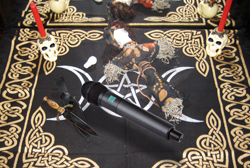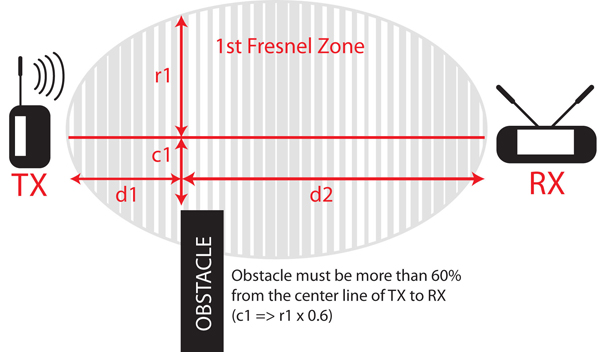
2. Learn, understand and utilize frequency coordination software. As noted, the software is only as good as the user. You’ll probably want to customize the settings to suit your style of working, and/or based on your experiences.
Often, programs have defaults that are fairly conservative, and you’ll be able to get more channels coordinated by relaxing some of them. However, much depends on the quality of the system components and the care with which the system has been set up.
3. Understand the RF fundamentals underlying all wireless mic systems whether they are analog, digital, 472 MHz or 2.4 GHz. Again, no secret here. There are certainly innovations going on in this part of our industry, as there are for loudspeakers, amplifiers and consoles. But just like for those other areas, the fundamentals still apply. There are no magic bullets.
4. Get your receiver antennas 10 feet in the air and at least 10 feet apart for a diversity pair. There is actually math behind this (there is math behind everything!) but let’s just say that with receiver antennas 10 feet in the air, there is better line of sight between transmitters and receivers while minimizing the effects of the floor and other obstacles in the Fresnel Zone.
As for the diversity pair, the bare minimum spacing is often said to be 1 wavelength, which works out to about 1 to 2 feet for UHF systems. However, it’s been demonstrated that the maximum advantage of diversity antenna pairs can be achieved with much greater spacing. A good rule of thumb is to place antennas on either side of the monitor console.
5. Get receivers and antennas as close to transmitters as possible. This is like mic technique: it’s all about signal to noise. The noise floor is relatively constant, although there can be localized noise sources, too. By placing antennas close to the desired source (transmitters), you’re increasing the desired signal over the undesired. Just watch out for antenna cable loss.
6. Understand that all manufacturers of quality systems have their own ways of doing things, and none is inherently “better” than any other. They all work well. Learn to understand the quirks of each without disparaging any others. If you’re paying $600 to $700 (or more) per channel of wireless, nothing “sucks.”
However, operator skills can make or break a system’s performance based on setup, frequency coordination and other related factors. A pro can get a $500 wireless system to work far better than a hack with a $5,000 wireless rig. True, the more expensive systems do have advantages such as better filtering, often better sound quality, more frequency choices, and probably better durability and reliability. But it still takes users knowing what they’re doing to get the most out of these advantages.
7. Overcome the trepidation associated with using this equipment. Follow the steps outlined here and you’ll be far more confident in specifying, setting up and using wireless systems. My goal is for all of us to be so good at working with wireless that it’s not automatically the first thing blamed when there is noise or other problems in a sound system.
That’s a worthwhile goal, isn’t it?
Karl Winkler is director of business development at Lectrosonics and has worked in professional audio for more than 15 years.

